Ugh, this heat! Camp at this chill Mt. San Jacinto spot
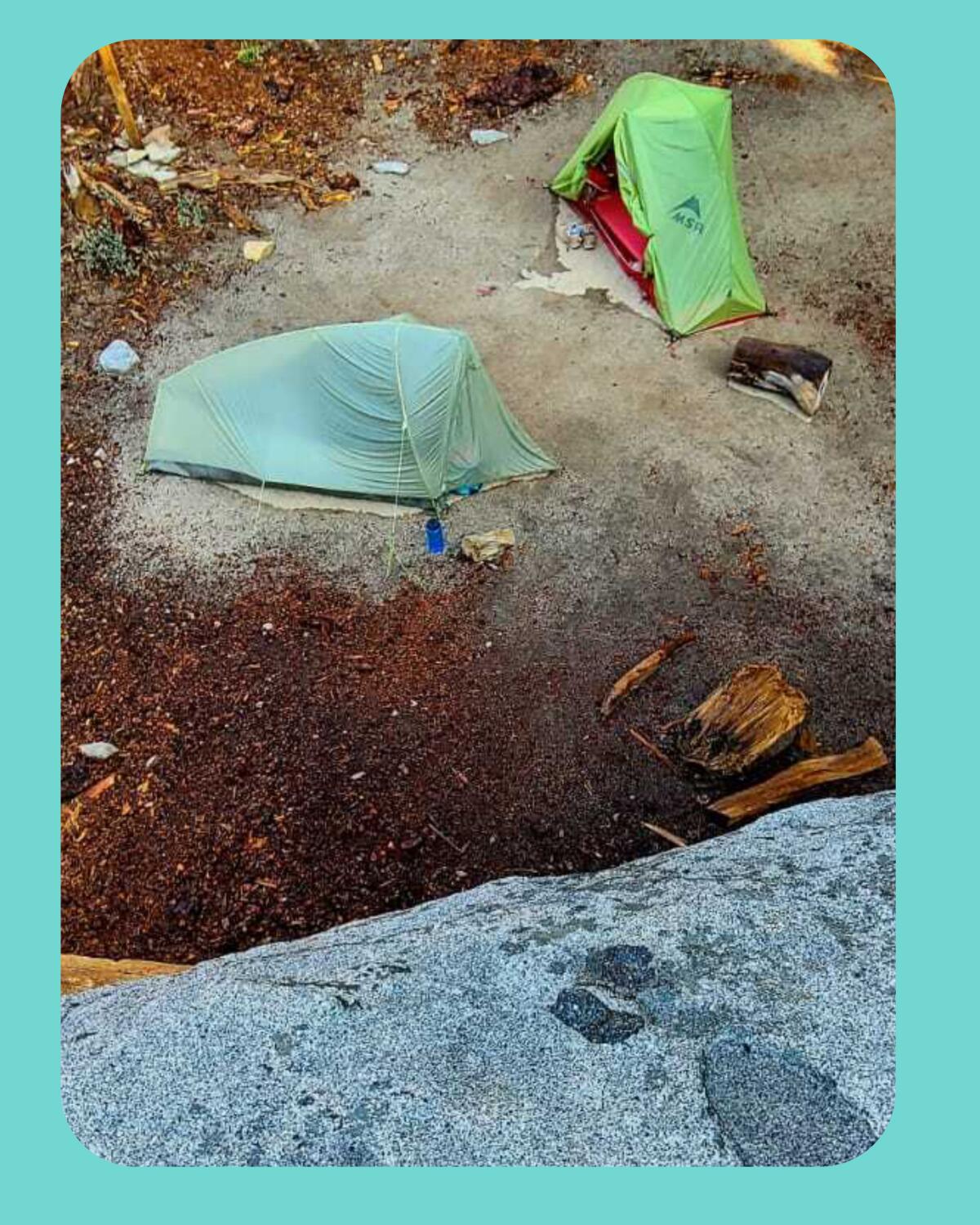
- Share via
By Mary Forgione
The triple-digit heat finally got to me. I wanted to be somewhere chill in nature — and get there fast. I grabbed a backpack and headed to sizzling Palm Springs, where I took the 10-minute aerial tram ride up to Mt. San Jacinto State Park. Ahh, the temperature was at least 20 degrees cooler.
I strolled over to the ranger station and snagged a permit ($5 per person) to stay at Round Valley, which has more than a dozen sweet back-country campsites set amid boulders and trees. The hike in was 2.3 miles with about 700 feet of gain on an easy, well-marked trail. I arrived at a cozy campsite, and boom, there I was at 9,100 feet above sea level, cool and comfortable with temperatures in the 70s.
The Cahuilla people hunted here; European settlers later logged and grazed the area, and in 1897 the area became a protected reserve. It became a state park in 1937. These days, the Palm Springs Aerial Tramway, which was completed in 1963, offers easy access with stunning views as you zip up from the desert floor ($28.95 for adults, $16.95 for children ages 3 to 10, plus $10 to park).
Staying overnight in the forest shortened the trek to 10,833-foot San Jacinto Peak, less than four miles each way with about 1,700 feet of gain. I lucked out at the high point: A group of runners had brought a new hand-painted sign that peak baggers could hoist above their heads for a victory pose. On the way down, I stopped to tour the emergency shelter, a stone structure built by the Civilian Conservation Corps in the 1930s. If you go (and you should), it’s best to make a back-country campground reservation by downloading a permit application and mailing a check (more info here).
6 things to do this week

1. Hike to a grove of redwood trees — in O.C. Coastal redwood trees (Sequoia sempervirens) are usually found in a corridor that runs from southwestern Oregon to southern Monterey County. Of course, the planet’s tallest living things have been planted elsewhere — such as in Carbon Canyon Regional Park in Brea. “The grove of 241 coastal redwoods is the largest of its kind in Southern California,” Matt Pawlik writes in his list of the 12 best trails in Orange County. “It grew from a local bank’s seedling promotion in the 1970s.” Another reason to go: These shade giants provide a quick cool-down. Also, check out the L.A. Times list of the 50 best hikes in L.A.

2. Watch a drive-in movie all about wolves. The return of wolves to North America is hailed as a conservation success story, but it’s a controversial one: What role do these animals play in the landscape where people live? Wolves were reintroduced to Yellowstone National Park in 1995. California recently identified a rare pack of gray wolves in Northern California. Colin Monda explores the species’ role in a 57-minute documentary called “The Trouble With Wolves.” REI will host a one-night showing of the film at 7:30 on July 25 in its parking lot at the Arcadia store (214 N. Santa Anita Ave.). A carload of people costs $25 for members, $45 for nonmembers. Admission includes a Whole Foods treat bag and onscreen Q&A with Kent Laudon, a wolf expert with the California Department of Fish and Wildlife, and Diane Gallegos of Wolf Haven International in Washington state. Can’t make it in person? $5 gets you a virtual screening, with proceeds going to Wolf Haven. Details here.

3. Take a free outdoor workout class Saturday mornings in Santa Monica. Free classes can provide an opportunity to try something new without a hefty investment. Free yoga, barre, kickboxing and other workouts are offered at 10 a.m. and 11 a.m. Saturdays through Sept. 25 on the Third Street Promenade in Santa Monica. Coming up: Recharge Method (meditation, dance cardio, high-intensity interval training) at 11 a.m. July 24; Cardio Sculpt fitness class at 10 a.m. July 31; and Cardio Hip-Hop at 11 a.m. July 31. Classes are free but you must register in advance. More Self-Care Saturdays events here.

4. Check out Plantopia at Union Station in downtown L.A. Love the green inside your home? You may want to check out the free Plantopia plant marketplace at L.A.’s Union Station on July 31. The day’s events include plant vendors, a Q&A with a plant doctor, authors and electronic music designed for plants. Advance signups are required. Find this and more on our plant event calendar.
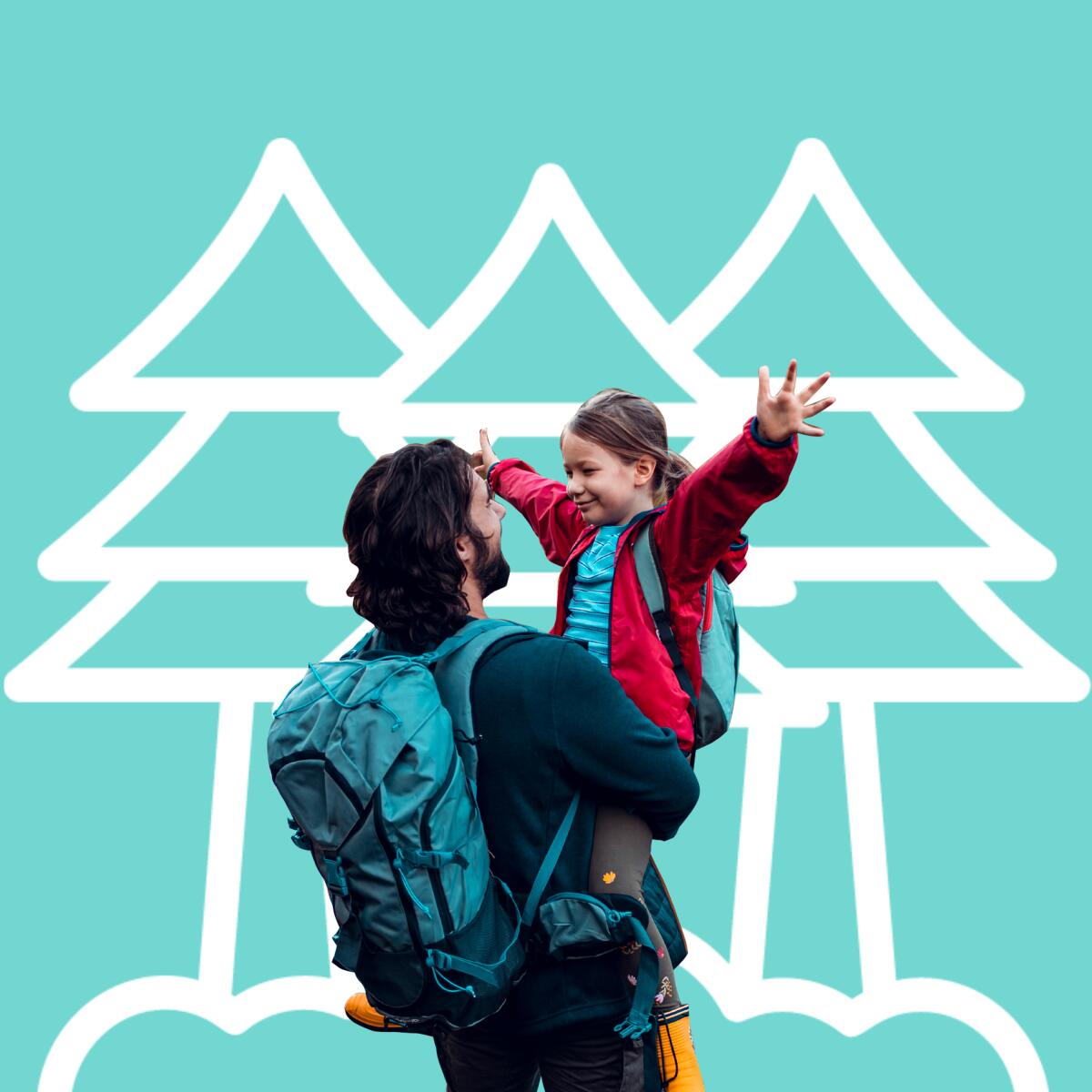
5. Explore the summer side of a local ski resort on guided hikes. It’s no secret that ski areas shift gears in summer to welcome hikers and mountain cyclists to the slopes. Now Snow Valley Mountain Resort in Running Springs is offering hikes in the Children’s Forest led by the resort’s general manager, Kevin Somes, at 11 a.m. and 2 p.m. on July 25. Hikers will see ponderosa pine, manzanita and other plants and wildlife along the way. Good for beginners too. Tickets for the chair lift to the hike cost $25 for adults, $19 for ages 13 to 21, and $15 for children ages 6 to 12. You can purchase tickets at the resort’s website.
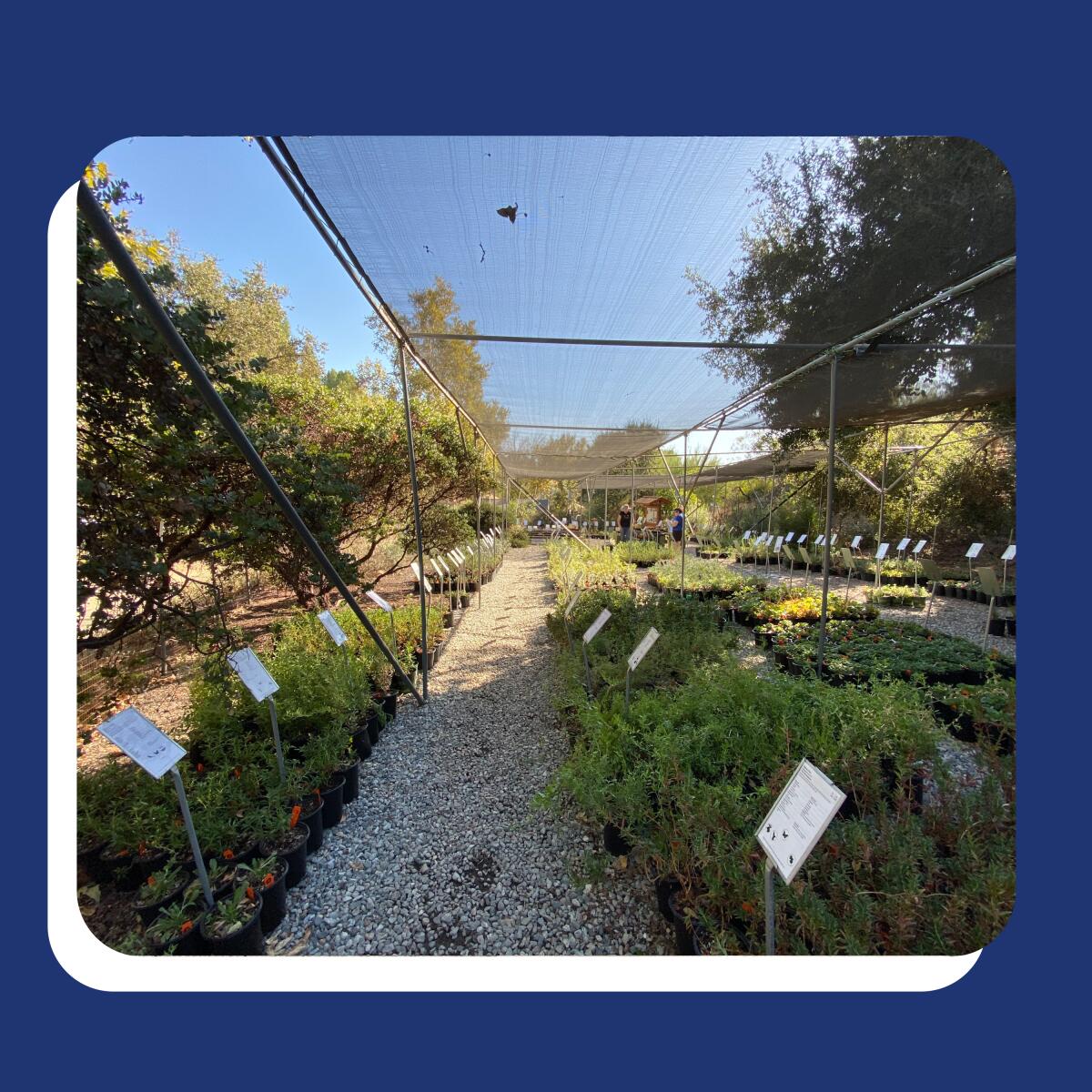
6. Sign up for a behind-the-scenes tour of SoCal’s preeminent native plant nursery. If you are thinking about planting California native plants this fall, here’s a chance to see how the pros propagate and conserve seeds. The Theodore Payne Foundation in Sunland offers outdoor tours led by horticulturist Katie Tilford that include places usually off-limits to the public. Sessions run from 7:30 to 9 a.m. July 22 and Aug. 12. Tickets cost $10 (free for members). More information here.
The red flag
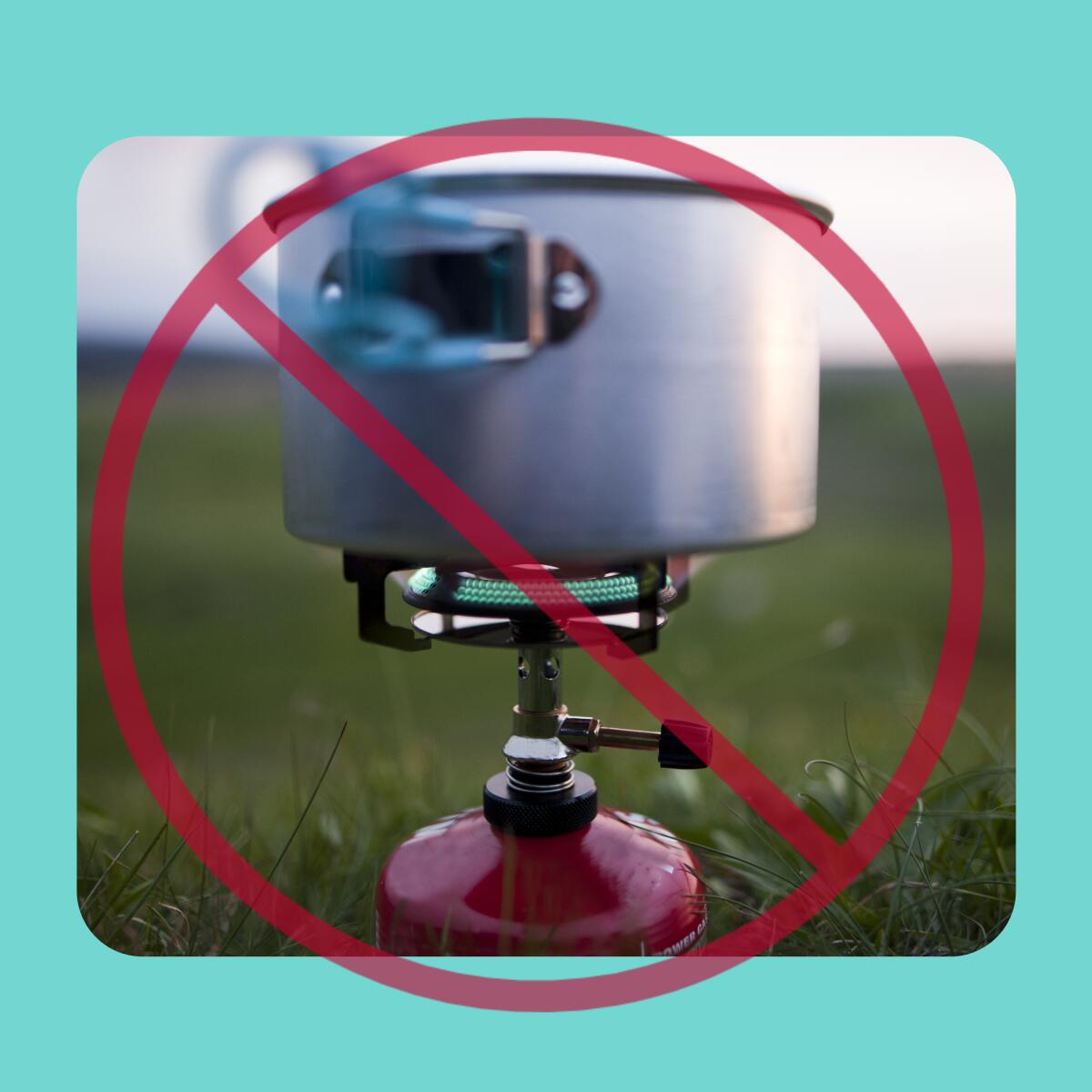
If you plan to overnight in the Angeles National Forest, leave your camp stove at home. It’s no surprise that the Forest Service last week elevated the fire danger to “extreme.” That means strict restrictions are now in effect. How strict? Stove fires, including two-burner propane stoves and backpacking stoves with those convenient canisters, are banned. The Forest Service defines “stove fire” as “a campfire built inside an enclosed stove or grill, a portable brazier, or a pressurized liquid or gas stove, including a space-heating device.” That means you must bring food that doesn’t require heating or boiling. You can find the rules for every level of fire danger here. By the way, “extreme” isn’t the highest danger level. If conditions turn “critical,” the forest and campgrounds could close.
Cool stuff
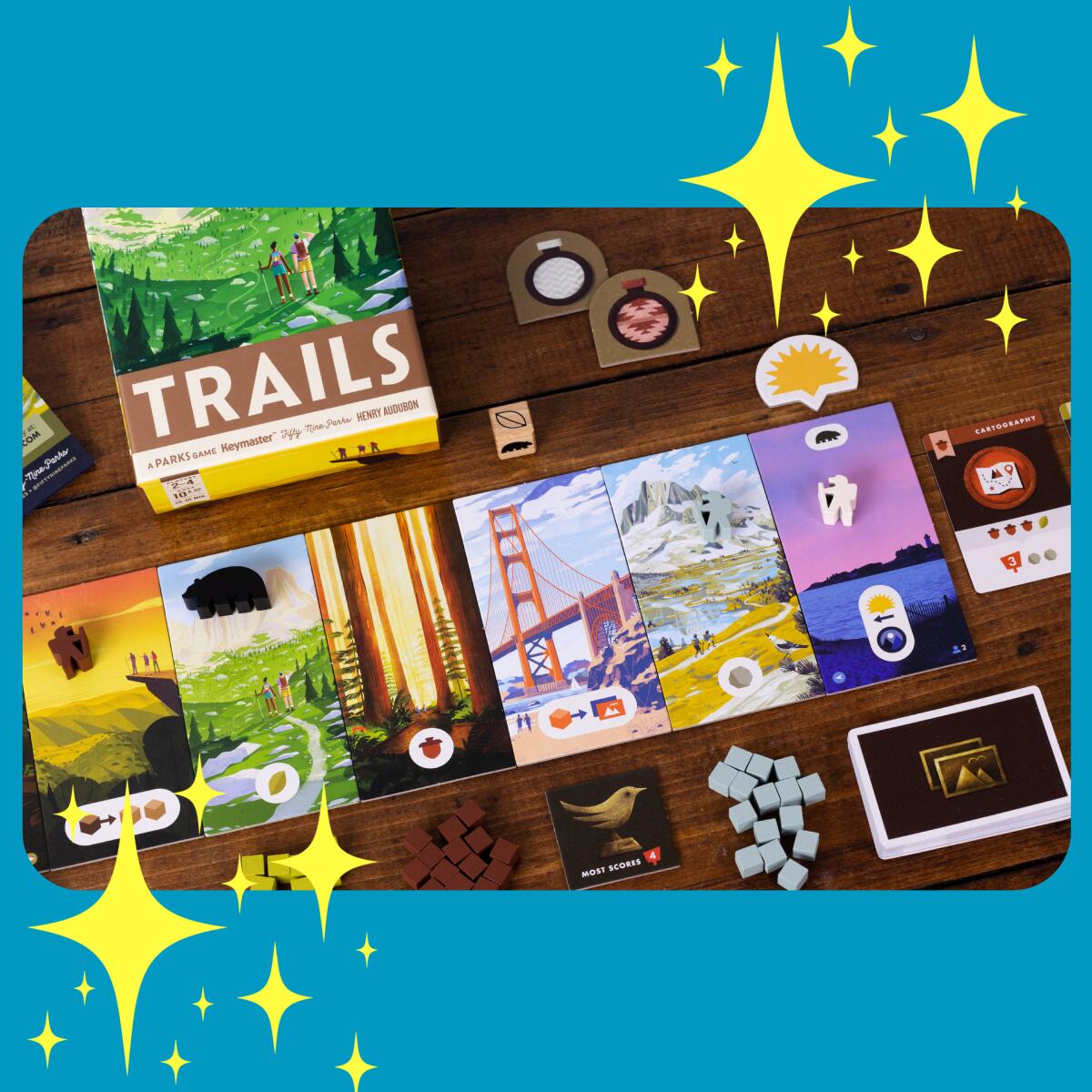
There are good reasons to take a hike on the new board game Trails. First, it’s visually stunning. The art for the board (made up of seven double-sided panels) and game cards are from Fifty-Nine Parks artist takes on national parks. Second, it’s engaging. As the sun moves across the board, day turns into night (you flip the panels) as your hiker token gathers acorns, leaves and rocks along the way. Henry Audubon (that’s his real name), who designed the game play for Keymaster Games, says Trails is a sequel to the popular Parks game, which came out in 2019. “When Keymaster asked me to design a gameplay system ... I had to keep a lot of constraints in mind from the start: how small the box would be, and what components we could use, because it was really important to hit a $20 price point.” The game — 4 ¾ by 6 ¾ inches — fits nicely in a backpack and is good for two to four players, ages 10 and older. It’s sold exclusively at Target ($19.99).
Limited time only

You can’t miss the gleaming 45-foot-tall white letters spelling out “Indian Land” as you drive into Palm Springs. The DesertX 2021 artwork called “Never Forget” was created by Nicholas Galanin, a Tlingit and Unangax̂ artist from Alaska. It’s meant to reference the Hollywood sign and the film industry that promoted “the white settler mythology of America as the land of the free, home of the brave” in the West, according to the DesertX website. With this piece, Galanin calls on landowners to “participate in the work by transferring land titles and management to local Indigenous communities.” It will remain on display at 2901 N. Palm Canyon Drive (behind the Visitor Information Center) until Aug. 15.
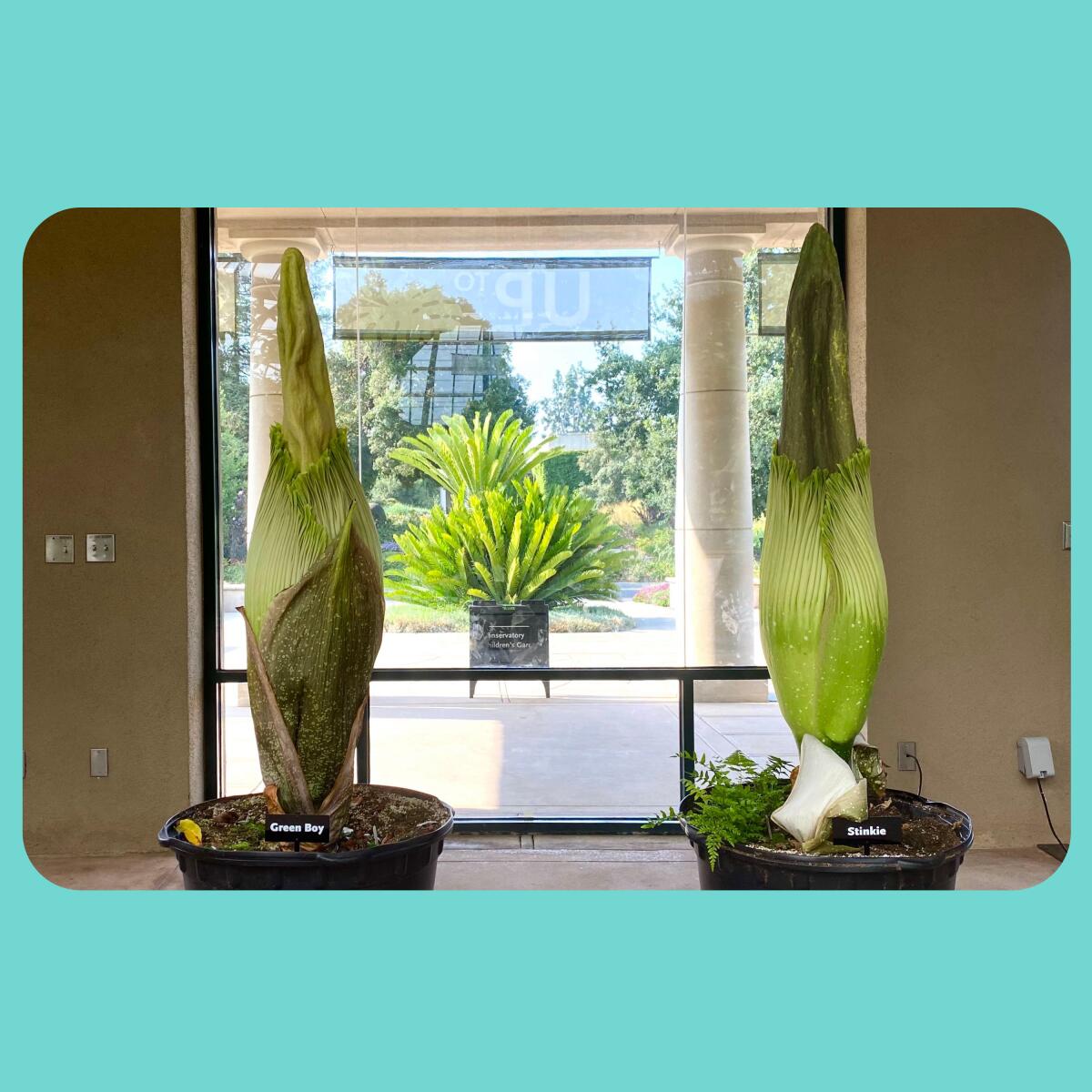
Could this be the Summer of the Stinky Flowers? The Huntington Library, Art Museum and Botanical Gardens in San Marino on July 5 witnessed the bloom of its biggest (and smelliest) corpse flower. Now come two more Amorphophallus titanum, nicknamed Green Boy and Stinkie. It’s hard to predict when the stalks will bloom, and it doesn’t last long. Green Boy started to open Tuesday, and Stinkie hasn’t yet begun (as of Wednesday). By the way, corpse flowers are named for their stench, which smells like rotting meat. They are native to the rainforests of Sumatra, Indonesia. To see these two in person, you can visit between 10 a.m. and 5 p.m. with advance tickets. Click here for updates on the corpse flowers and how to buy tickets.
The must-read
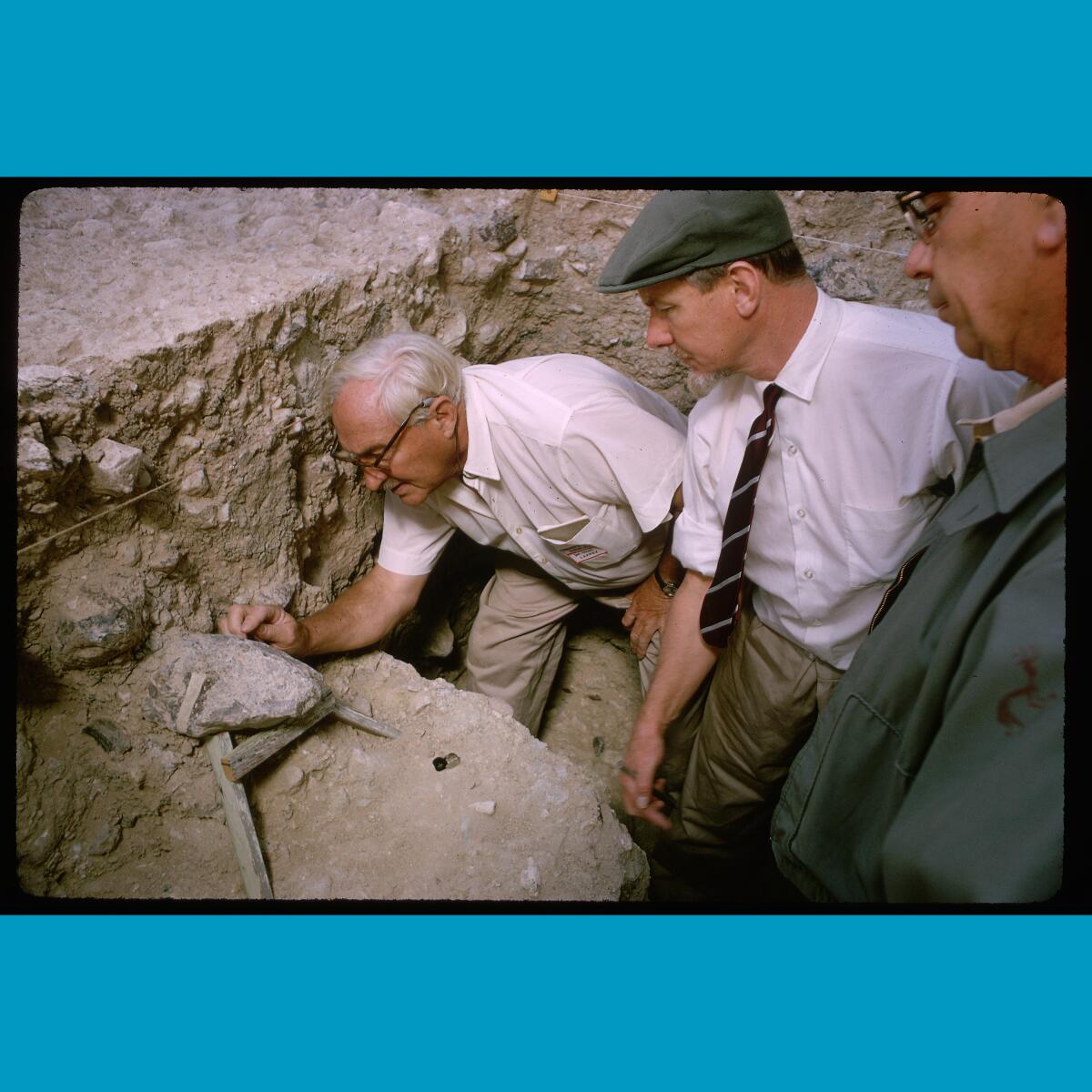
Maybe you’ve never heard of the Calico Early Man Site in the Mojave Desert east of Barstow, or archaeologist Fred E. Budinger Jr. The controversy about whether artifacts of ancient people in North America are real or not has been swirling for decades. My Times colleague Thomas Curwen writes: “[Archaeologists] first came upon Calico, a sun-blasted bentonite claim, in the 1940s and were intrigued by chunky stones that littered the ground and looked like hand axes and scrapers. But not everyone agreed, and the site became the subject of fierce debate, kindled by those who believed that some artifacts were more than 200,000 years old and those who dismissed that belief as nonsense.” Fast-forward to now, when Budinger, 75, one of the last living experts (they included the legendary Louis S.B. Leakey) continues to commit his life to the site that’s now overseen by the Bureau of Land Management. Read the full story here and why Curwen pursued the story.
Send us your thoughts
Share anything that’s on your mind. The Wild is written for you and delivered to your inbox for free. Drop us a line at TheWild@latimes.com.
Click to view the web version of this newsletter and share it with others, and sign up to have it sent weekly to your inbox. I’m Mary Forgione, and I write The Wild. I’ve been exploring trails and open spaces in Southern California for four decades.

Sign up for The Wild
We’ll help you find the best places to hike, bike and run, as well as the perfect silent spots for meditation and yoga.
You may occasionally receive promotional content from the Los Angeles Times.




